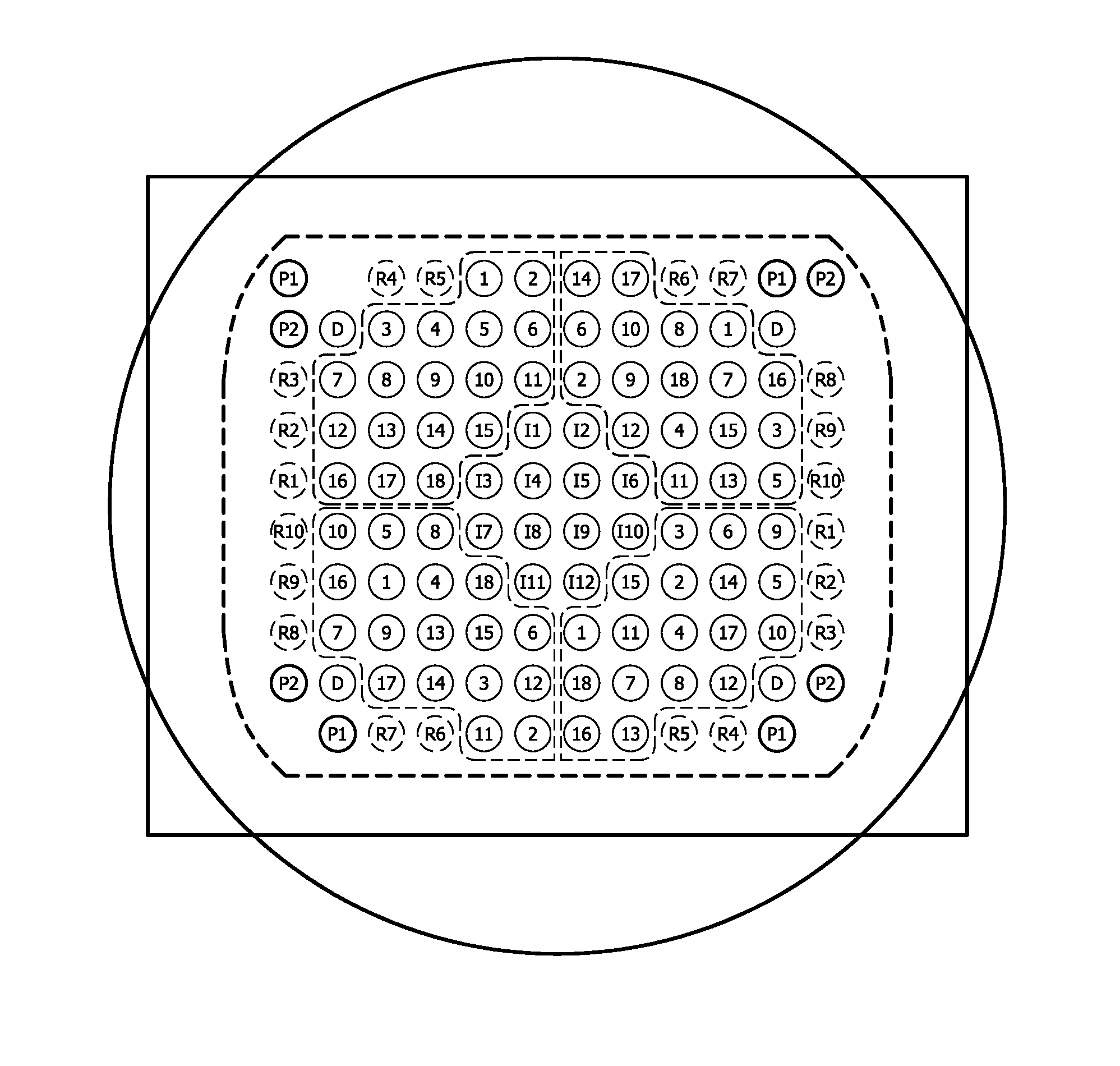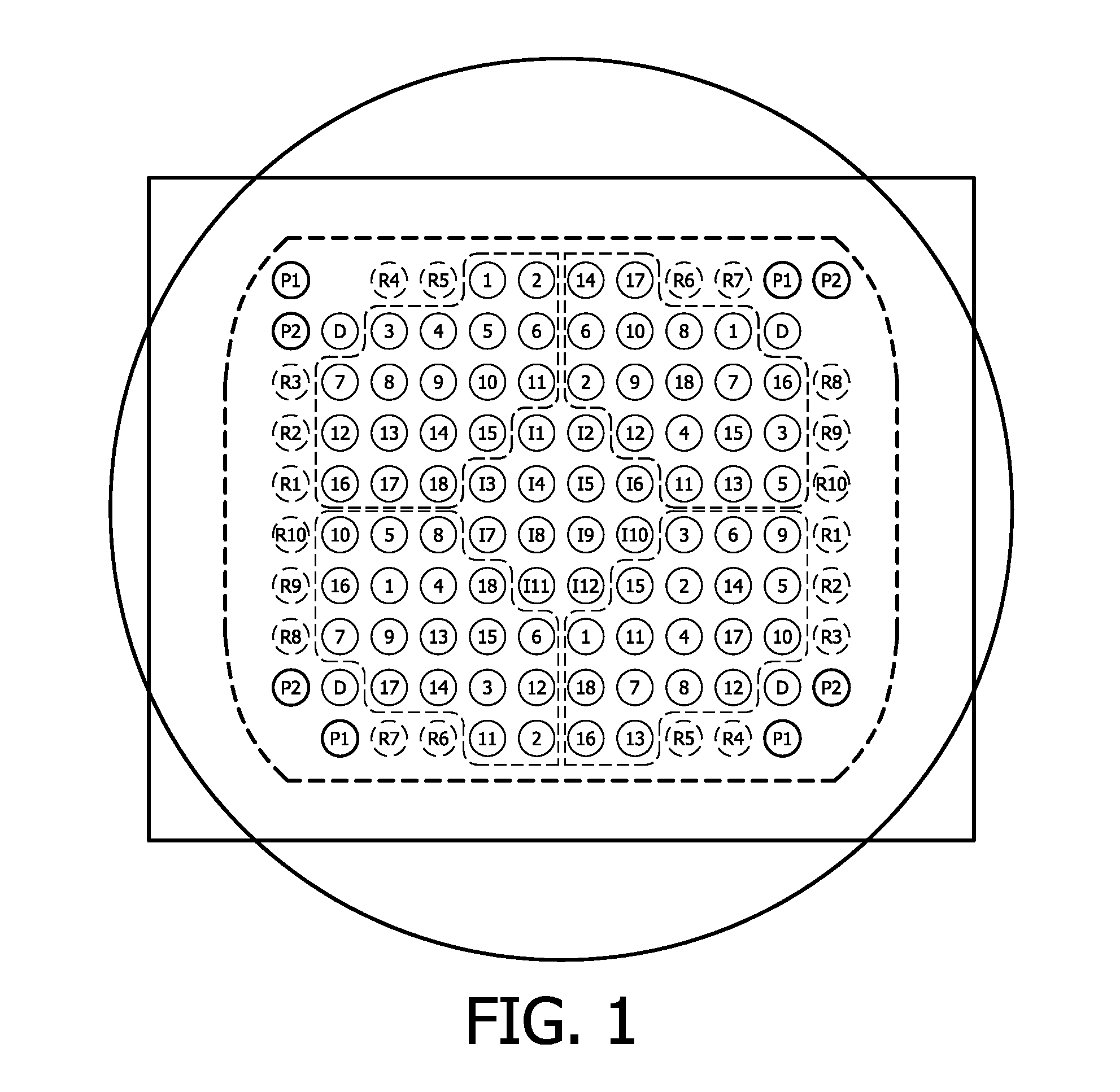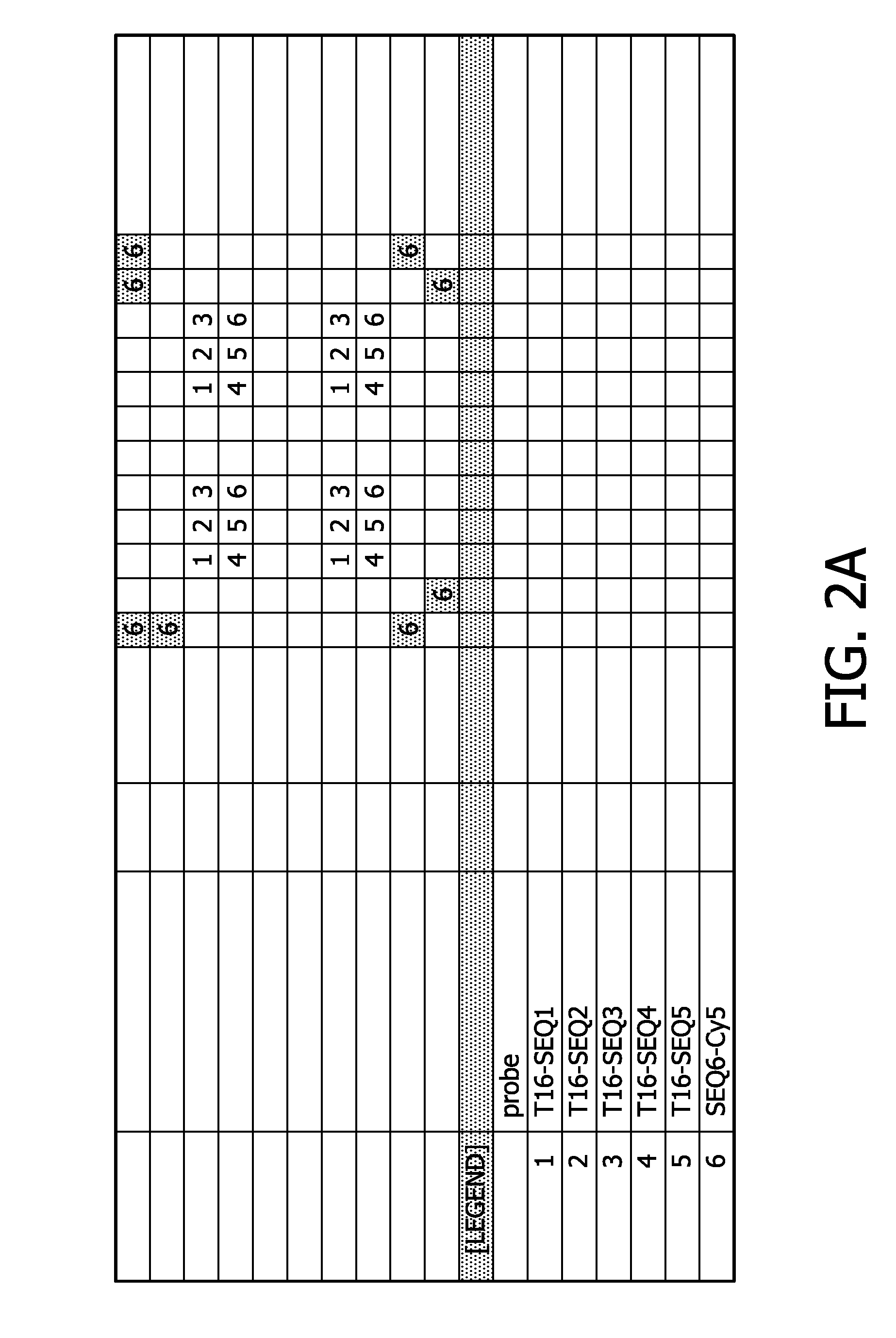Method for testing and quality controlling of nucleic acids on a support
- Summary
- Abstract
- Description
- Claims
- Application Information
AI Technical Summary
Benefits of technology
Problems solved by technology
Method used
Image
Examples
example 1
Control Probe Assay
[0164]A membrane was printed and post-processed using UV-light at a wavelength of 254 nm and a standard pre-hybridization method. An outline of the deposited nucleic acids etc. can be derived from FIG. 2A.
[0165]After post-processing, an image of the membrane only shows the labeled spots (see FIG. 2B). Subsequently, the membrane was incubated with a labeled Al6 oligonucleotide for a time period of one hour at a temperature of 50° C. As label Cy5 was used. The hybridization buffer was 5×SSC, 0.1% SDS, 0.1 mg / ml herring sperm DNA. Hybridization was done at 50° C. during 1 hour. After hybridization, a short rinse with 2×SSC and 0.1% SDS was carried out. Subsequently, the membrane was dried and the array was imaged.
[0166]As can be derived from FIG. 2C, the hybridization spots are clearly visible. This means that in all areas, in which DNA was deposited and immobilized DNA is present. Furthermore, the deposited and immobilized DNA is able to hybridize with an adenine co...
example 2
Testing of Membrane for Non-Disruptiveness of Method
[0168]In order to prove that the control method is non-disruptive, the membrane used in Example 1, i.e. in a control and test hybridization approach as depicted in FIGS. 2B to 2C, was subsequently heated up to remove the control probe.
[0169]The image of the membrane directly after heating up in order to remove all the control oligonucleotides from the capture probe spots shows that the hybridization spots no longer comprise any signal (see FIG. 2D).
[0170]To prove that control method as described in Example 1 does not harm the sequence of the immobilized nucleic acid, which is to be used for specific hybridization and binding of a specific oligonucleotide, the membrane was subsequently incubated with 10 nM of a labeled antisense molecule, which is complimentary to the DNA deposited on spot #4. The membrane was incubated for a time period of one hour at a temperature of 50° C. during 1 hour. The hybridization buffer was 5×SSC, 0.1% S...
example 3
Recovery Testing and Sensitivity Testing of Nucleic Acids Comprising a T-Tail
[0173]The sensitivity, i.e. the number of captured analytes per unit of time, was tested in a real-time hybridization assay. Nytran N or Nytran SPC nylon membranes were used for the experiments.
[0174]The assay was carried out with capture oligonucleotides (i.e. deposited nucleic acid molecules to be immobilized) comprising either no T-tail or a T16-tail, i.e. a stretch of 16 thymidines. These experiments were done in a flow cell, which is a device into which the membrane is clamped and the hybridization fluid is pumped through the membrane. In FIG. 4A, on the X-axis, the cycle number is depicted, which is an equivalent for the time (1 cycle takes 1 minute). Hybridization was done with complementary DNA. The hybridization buffer was 5×SSC, 0.1% SDS, 0.1 mg / ml herring sperm DNA. The temperature was set at 50° C.
[0175]As can be derived from FIG. 4A the oligonucleotides comprising a T16-tail show increased hybr...
PUM
| Property | Measurement | Unit |
|---|---|---|
| Wavelength | aaaaa | aaaaa |
| Wavelength | aaaaa | aaaaa |
| Wavelength | aaaaa | aaaaa |
Abstract
Description
Claims
Application Information
 Login to View More
Login to View More - R&D
- Intellectual Property
- Life Sciences
- Materials
- Tech Scout
- Unparalleled Data Quality
- Higher Quality Content
- 60% Fewer Hallucinations
Browse by: Latest US Patents, China's latest patents, Technical Efficacy Thesaurus, Application Domain, Technology Topic, Popular Technical Reports.
© 2025 PatSnap. All rights reserved.Legal|Privacy policy|Modern Slavery Act Transparency Statement|Sitemap|About US| Contact US: help@patsnap.com



